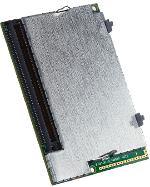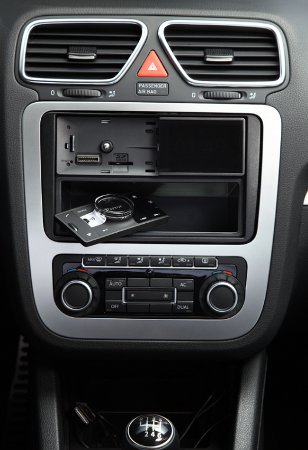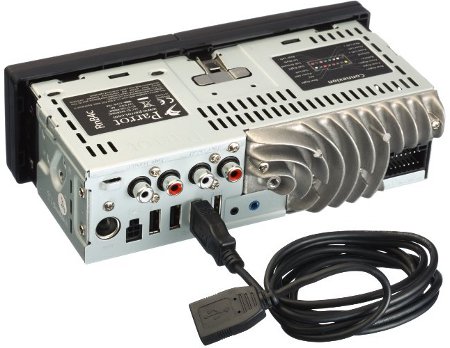Android car receiver offers hands-free telephony, web access
Aug 24, 2011 — by Eric Brown — from the LinuxDevices Archive — 4 viewsParrot is readying what it claims is the world's first Android-based car receiver for an October release. The Parrot Asteroid offers a 3.2-inch display, GPS-based location services, Bluetooth, optional 3G access to web services, a 4 x 55 Watt MOSFET amplifier, plus support for music sources including Internet radio and a built-in FM/AM tuner.
Known primarily for its automotive accessories, Paris-based Parrot S.A. went off on a tangent last September with its AR Drone, a hackable, Linux-based "quadrocopter" flying drone. The company announced the Asteroid — its first Android-based automotive device — at the CES show in January, and now has more information on this car receiver, which it expects to ship in October.

Parrot Asteroid
(Click to enlarge)
 The Parrot Asteroid will be available as a finished retail-ready device, as well as an OEM version called the FC6100 (pictured at right). We'll look at the consumer-focused Asteroid here.
The Parrot Asteroid will be available as a finished retail-ready device, as well as an OEM version called the FC6100 (pictured at right). We'll look at the consumer-focused Asteroid here.
The Asteroid is a single-DIN device equipped with a magnetic guiding system for quick insertion or removal of the faceplate, says Parrot (see image below). The 3.2-inch display does not appear to offer touch support. Instead, discreet buttons give access to hands-free telephony or the music system, and a rotary button allows for navigation in other menus, says the company.

The Asteroid installed in a single-DIN slot, with faceplate removed
No processor or memory details were supplied, but the device is said to offer Bluetooth 2.1 +EDR, a GPS dongle, and an optional 3G key for web access. Four USB ports and an SD slot are also available, says Parrot.
Audio features include a 4 x 55 Watt MOSFET amplifier, plus six RCA pre-amp outputs, two of them intended to drive subwoofers, says Parrot. A parametric equalizer is provided, along with seven bands, six defined presets, and one user preset, says the company.

Rear view of the Asteroid, showing RCA outputs
(Click to enlarge)
The Parrot Asteroid accepts music input from sources including a USB key, an SD card, an Apple iPhone or iPod, or any MP3 player. With the 3G option, digital radio is also available, with built-in access to TuneIn, offering access to 50,000 Internet radio stations, says Parrot. The receiver can also receive music files from a mobile phone via Bluetooth stereo A2DP, says the company.
A dedicated voice recognition button lets users search for the name of an artist or an album without touching the wheel button, says the company. The search function is said to work across all connected audio sources.

Top view of the Asteroid
(Click to enlarge)
Other pre-installed apps stretch beyond music and phone contacts. For example, a Weather app is said to offer weather forecasts based on GPS location. Although the system does not yet appear to offer a full-fledged turn-by-turn navigation app, a Maps app and cartography service can identify and locate points of interest close to the vehicle.
A Roadtrip app, meanwhile, offers an itinerary service to touristic points of interest, with vocally expressed historical and meteorological details. Associated photographs are also displayed on the Asteroid screen.
Finally, a Wikango app accepts input from a connected speed-camera warning app system. The app displays information about speed controls in real time. The spots are declared and shared between Wikango users.
Like the AR Drone, the Asteroid is said to be an open platform system. This would suggest that Android app developers can work with Parrot to adapt or write apps specifically for the system.
Availability
The Parrot Asteroid will be available in October at the recommended retail price of $349, says the company. More information on the Asteroid and the FC6100 OEM version may be found at the Parrot Asteroid site.
This article was originally published on LinuxDevices.com and has been donated to the open source community by QuinStreet Inc. Please visit LinuxToday.com for up-to-date news and articles about Linux and open source.